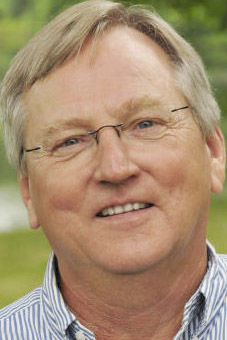Globe Gazette: Guebert: What’s the matter with Kansas?
Some folks thought Corie Brown was too negative in her recent article:
New Food Economy: Rural Kansas is dying. I drove 1,800 miles to find out why
Alan Guebert provides an important viewpoint:
by ALAN GUEBERT | May 4, 2018
For over 100 years, some Kansans have either built or added to their journalism reputation by asking this simple question: What’s the matter with Kansas? The answer, however, is far from simple.
The first to ask was William Allen White, the publisher and editor of the Emporia Gazette. White, a mainstream Republican, posed the question as the headline to his sarcasm-filled, 1896 editorial that linked Kansas’ rising populist movement with its flagging economic future.
Progressive Republicans (a young Theodore Roosevelt was one) were elated by the biting analysis and anointed White a party sage. Later, he became a party kingmaker.
More than a century later, another Kansan, historian and political analyst Thomas Frank, used White’s famous question as the title for his 2004 book that examined why the state’s “political conservatism” thrived despite “economic policies that do not benefit the majority of people” there.
The answer, Frank discovered, was that Kansas Republicans represented an “archetype for the future of politics in which fiscal conservatism becomes the universal norm and political war is waged over a handful of hot-button cultural issues.”
That 14-year-old forecast is fulfilled in today’s culturally conservative, deeply fractured Republican House caucus. It has chewed up two of its own Speakers in the last three years and is now pointlessly politicalizing a bland, place-holding Farm Bill over SNAP, the nation’s already shrinking, principle food aid program.
Now arrives a third Kansas author, Corie Brown, whose 5,500-word story, “Rural Kansas is dying. I drove 1,800 miles to find out why,” was published April 26 by newfoodeconomy.org. It is a deeply-sourced, on-the-ground report detailing the state’s fast-emptying — or, in fact, already empty — rural communities and counties.
Brown isn’t a freelance rookie; she’s an experienced, fourth-generation Kansan who has worked for the Los Angeles Times, Newsweek, and BusinessWeek. She knows her craft and has a readable style that weaves facts, ideas, and place into a balanced examination of the state’s weak rural economy and even weaker rural future.
She gets to the nub of her tale in the story’s second paragraph. “That’s the thing about rural Kansas,” she shrewdly observes. “No one lives there, not anymore. The small towns that epitomize America’s heartland are cut off from the rest of the world by miles and miles of grain, casualties of a vast commodity agriculture system that has less and less use for living, breathing farmers.”
To support this thesis, Brown quotes 21 farmers, Land Grant University experts, local food activists, and farm group leaders on the state’s rural decline and what can be done to slow or reverse it. Few offer much hope. Some, like Kansas State ag economist John Leatherman, who Brown cites, even see the rural drying up as a good thing.
“‘Under-utilized human infrastructure’ — schools and hospitals serving depopulated areas — is a burden on urban taxpayers, he said. ‘It is good for society and the world as a whole,’ to move to a more robotic ‘factory floor’ model for agriculture.”
Sure, if you’re a tenured professor with a guaranteed pension. If you’re a farmer, rancher or rural resident, however, making a living in Kansas is as hard now as anytime in its long, bloody history.
“Kansas farmers are very good, very efficient,” Nancy Landon Kassebaum, the former U.S. senator who still ranches in the state’s famed Flint Hills region, tells Brown.
What that really means, though, is that “Kansans will cling to commodity agriculture even if it destroys them.”
That’s brutally true for commodity agriculture everywhere: it’s an unwinnable argument with economic reality; a zero-sum game where the unending chase for ever-lower costs fuels today’s race to the bottom. The game, once fun, now ends with everyone losing.
That’s what’s the matter with Kansas: Its “… blind faith in outdated agricultural orthodoxy and a failure to imagine a new way forward for farmers still dominates rural policy,” Brown deftly explains.
Maybe the worst part of that diagnosis is that nearly everyone in commodity agriculture, from Connecticut to Kansas to California, already knows it. But all have convinced themselves they will be the final winner in a game designed to have none.
The Farm and Food File is published weekly through the U.S. and Canada. Source material, past columns and contact information are posted at farmandfoodfile.com.
